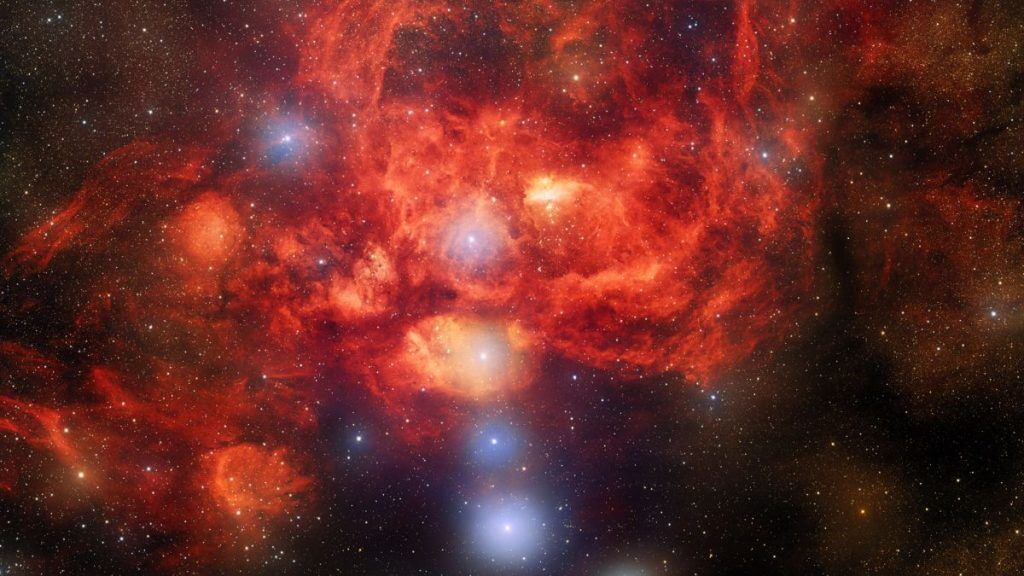
‘Lobster Nebula’ glows red in stunning new image from dark energy hunter (Image Credit: Space.com)
A camera designed to decode the secrets of dark energy has captured a stunning new image that reveals the insides of a distant star-forming region.
The Dark Energy Camera, an instrument mounted on the 13-foot (4 meters) Víctor M. Blanco Telescope at Cerro Tololo Inter-American Observatory in Chile, is a part of the Dark Energy Survey project that searches for evidence of dark energy, the invisible force that astronomers think accelerates the expansion of the universe.
As it searches for the mysterious force, the telescope also snags some incredible views of the universe. The new image, released on Monday (Sept. 12) captures the Lobster Nebula, a star-forming region some 8,000 light-years away from Earth in the constellation Scorpius.
Related: James Webb Space Telescope spots alien planet shrouded in weird sand-filled clouds
The image shows a region 400 light-years across in which bright young stars are scattered across the clouds of dust and gas. At the center of the image is what astronomers call an open star cluster, a loose group of very young and massive stars.
Some of the bright dots surrounding the cluster are so-called protostars, nascent stars still wrapped in tight shrouds of dust and gas, slowly emerging into their full dazzling beauty.
Interstellar winds, galactic radiation and powerful magnetic fields batter the nebula, squeezing the gas and dust inside into twisting streams and braids.
The Dark Energy Camera is one of the highest-performance wide-field charged-coupled device cameras in the world, a type of digital imaging technology that can capture very faint sources of light, according to a statement (opens in new tab) by NOIRLab, which operates the device.
The camera, capable of delivering 400 to 500 images per night, has recently reached a milestone of 1 million individual exposures. Astronomers look for the evidence of dark energy in the images by studying how distant objects move.
To create this particular image, astronomers used special filters that isolate specific wavelengths of light. By observing distant stellar clusters at these wavelengths, scientists can better understand not just the motions, but also the temperatures and chemistry of the distant star-forming regions.
The final image is a combination of multiple exposures taken with different filters that have been stacked on top of each other to create a photograph that captures the Lobster Nebula as it would look in the sky when observed by the naked eye if it were much brighter.
The image was unveiled at the DECam at 10 years: Looking Back, Looking Forward conference held in Tucson, Arizona, on Monday (Sept. 12).
Follow Tereza Pultarova on Twitter at @TerezaPultarova (opens in new tab). Follow us on Twitter @Spacedotcom (opens in new tab) and on Facebook (opens in new tab).





